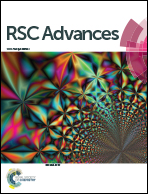Properties of differentiated SH-SY5Y grown on carbon-based materials†
Abstract
Neural cell differentiation has been extensively studied in two-dimensional (2D) cell culture plates. However, the cellular microenvironment and extracellular matrix (ECM) are much more complex and flat 2D surfaces are hard to mimic in ECM. Carbon nanotubes (CNTs) and graphenes are multidimensional carbon-based nanomaterials and may be able to provide extra dimensions on cell growth and differentiation. To determine the effect of CNTs and graphene surfaces on the growth, gene expression, differentiation and functionality of neuroblastoma to a neural cell, SH-SY5Y cells were grown on a 2D (control) surface, a CNT network and a graphene film. The data suggest that SH-SY5Y cells grown on CNT surfaces show an average 20.2% increase in cell viability; 5.7% decrease in the ratio of cells undergoing apoptosis; 78.3, 43.4 and 38.1% increases in SOX2, GFAP and NeuN expression, respectively; and a 29.7% increase in mean firing rate on a multi-electrode array. SH-SY5Y cells grown on graphene film show little or no changes in cell properties compared to cells grown in 2D. The data indicate that the three-dimensional (3D) surface of CNTs provides a favorable environment for SH-SY5Y cells to proliferate and differentiate to neurons.



 Please wait while we load your content...
Please wait while we load your content...